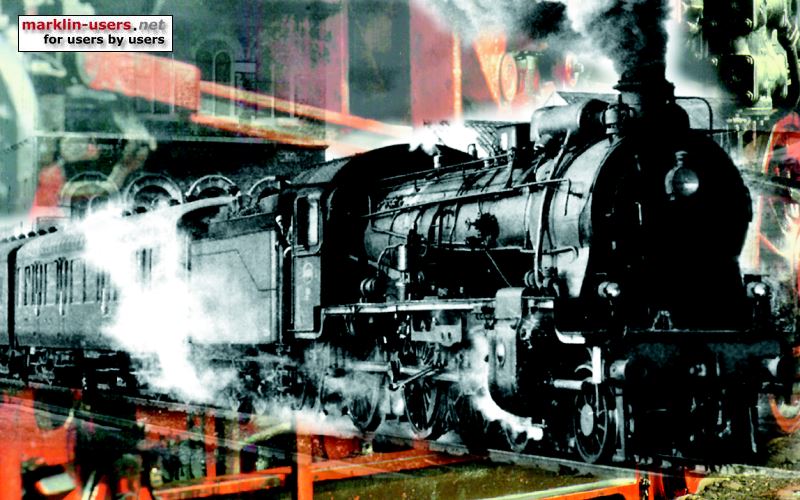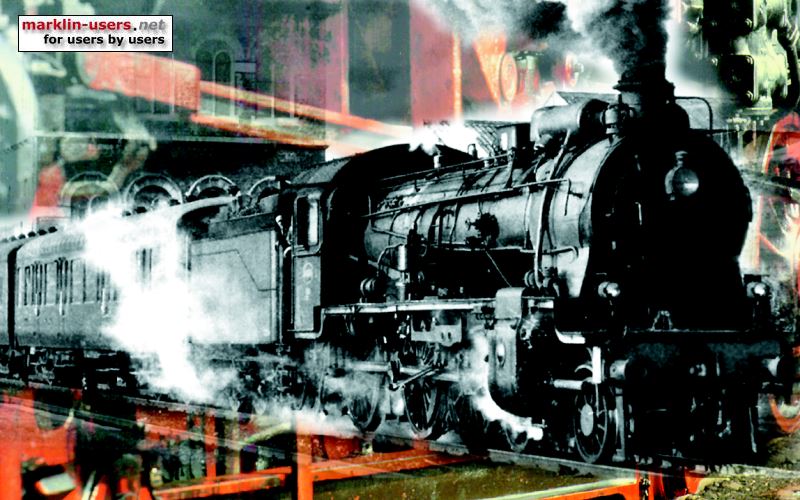| The 6021 Control Unit has 4
settable DIP switches on the back side of it. These change the
characteristics of the 6021 Control Unit in different ways...
Here's an attempt to explain the
different functions:
| |
OFF position (down) |
ON position (up) |
| DIP 1 |
Old Märklin protocol enabled |
Old Märklin protocol disabled if
DIP 2 is ON, otherwise no effect |
| DIP 2 |
New Märklin protocol disabled |
New Märklin protocol enabled |
| DIP 3 |
Standard pacing of commands to the
track |
Fast (continuous)
pacing of commands to the track (DIP 2 must be ON) |
| DIP 4 |
Full voltage to the
track, normal state |
Reduces the output voltage to about 12 V.
This was probably meant for a future "Z-digital" or other
stuff that might come. However, this can also be used in station
areas where a lower speed is preferred too... |
Q & A
Can I use these settings freely with
all my locos ?
- No, it depends on the decoder chip version on the loco decoder board.
Do these settings affect accessory
decoders as the 6083 too ?
- No, the accessory decoder signals are not affected, the commands to
these are sent at an other frequency than commands to locos.
What does "Old" and
"New" Märklin protocol mean ?
- Basically, the "New" protocol has an absolute direction
setting embedded into the command, i.e. locos are direction sensitive also
to speed commands. Older decoders are not, they only react on the
"reverse" command.
How do I know which loco will run with
which setting ?
- You will have to examine the chip version on the loco decoder, and look
at the table below.
What does the DIP 3 on-setting mean to
me ?
- If you run by 6050/51 and computer, you will see a significantly shorter
"reaction" time from loco decoders, the throughput from the
computer to the track is higher.
The impact of different settings
| Setting |
Chip Zymos |
Chip LME03 |
Chip 701.13 |
Chip 701.17 and later |
 |
Works, default forward
after a power-up |
Works, default forward
after a power-up |
Works, default forward
after a power-up |
Works, but with
unpredictable startup direction, no absolute direction commands |
 |
Works, default forward
after a power-up |
Works, default forward
after a power-up |
Runs, but is not
direction sensitive,
default forward after power-up. |
Works, 6021 controls
the direction, but usually starts backwards (6021 default),
sometimes unpredictable reversing.. |
 |
Some work, some
don't... |
Will not reverse |
Runs, but is not
direction sensitive,
default forward after power-up. |
Works, 6021 controls
the direction, but usually starts backwards (6021 default) |
 |
Some work, some
don't... |
Dead |
The optimum setting for
this chip when run by computer and 605x interface |
As above, but faster
reaction. Optimum setting regarding response time |
The new decoders with extra functions,
for e.g. sound, need the DIP 2 to be ON, which means that the
direction-sensitive protocol is also enabled. This leads to a total mess
on the layout if you operate it by computer with the 605x Interface since
you can not control the command format for each loco. The only usable
solutions for computer operations are either to have a "Direct
Control" software directly feeding a booster, or to get the Uhlenbrock/Modeltreno Intellibox that has an extended command set to
handle the direction sensitive speed commands from the computer.
Too bad that Märklin has introduced a
new loco decoder format that can't be handled by their own 6051
box.....
But absolute direction is definitely the way to go, so don't buy an older
decoder unless you plan to use your 6020 Central Unit for a long time or
plan to get an Intellibox, since the IB can be set to transmit either the
old or new format on each individual loco address..... |